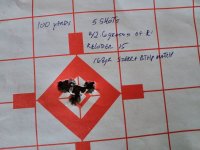Mahziar, it does take some deeper and longer discussion to cover the topic of the effects of tempo, fouling, etc., but I think you get the point now.
It certainly can be difficult to sort out with so many crazies and fakers on the internet.
In a few contexts within serious formal target shooting, we would be able to say there is enough "standardization" to be able to generalize down to an average expectation for the tempo or number of shots between cleanings.
Back in the days when there were games when hundreds of folks were essentially shooting nearly identical guns with nearly identical loads, we could have shown a student on cue exactly what to expect when they ran too hot or too dirty. However...
Outside of a specific context like that one, it is very difficult to demonstrate the do's and don't to beginners.
In general, you ask a fair question for a shooter who is getting serious about group or score. But, since recipes and powders are all over the map, and barrel sections are vastly different, we can only give you generic advice or answers.
It certainly is important to pay attention to cleaning, round count for fouling, tempo, ammo temperature or heat soaking in the chamber, barrel heating, shooter fatigue, etc..
If you make a habit of hammering out long strings without a break and get the barrel very hot, you can expect a shorter barrel life and you will also notice a difference in the rate of fouling.
The context matters. We learn some things from fully automatic weapon systems, and others from extreme accuracy contexts.
Folks who are serious highpower competitors, or varmint shooters, can set examples of very high performance while pushing the limits of tempo and cleaning. To refute that 3 minute between shots comment above, one only has to visit with those folks for the proof.




